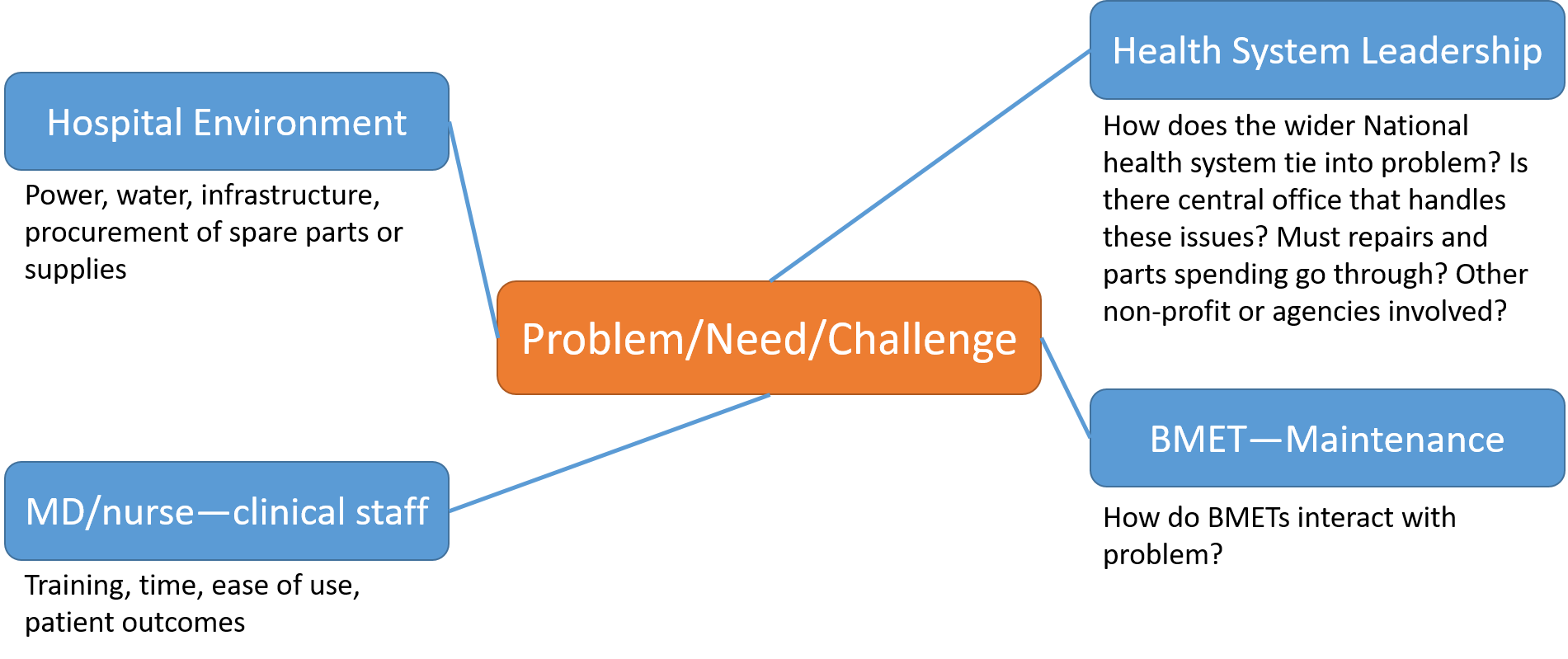Challenges for Medical Equipment in Low Resource Settings
EWH encounters many different needs, challenges, and problems while working in our partner hospitals. The cause of these issues can range from system level issues, such as procurement of parts and supplies to more technical challenges like power surges and outages. EWH is most interested in innovations that improve equipment operations and the ability for nurses and doctors to provide quality care and diagnosis.
EWH has identified 5 critical characteristics of low-resource settings that should be considered during the innovation process:
1) Unreliable and/or lack of electricity and other infrastructure
For a number of different reasons, powering medical equipment in low resource settings is a challenge. Lack of good power infrastructure and not enough power stations to meet demand lead to consistent power outages and rationing. Surges are also common as strained grids try to compensate for changes in load. On top of this, power is extremely expensive compared to what is paid in many developed countries. Most medical equipment is power intensive and very sensitive to voltage changes or surges. EWH has observed countless pieces of equipment that have failed due to power surges destroying components. Integrated battery backup systems fail quickly due to overuse and/or poor quality.
Other infrastructure challenges, such as poor roads, lack of a quality water supply and internet connectivity can compound the difficulties of keeping equipment operating properly.
2) Lack of user training and materials
A major hurdle when implementing any new procedure or technology in a healthcare setting is training. EWH has observed many newly donated pieces of equipment in storage due to a lack of manuals and staff not having time to learn how to use a new piece of equipment. If manuals are included, typically they are not in the local language and difficult to digest without specific previous knowledge or training. These issues extend to repair and maintenance of medical devices as well.
3) Lack of spare parts
For a variety of reasons, it is very difficult to get specific spare parts for medical equipment. Small components or lower cost consumables are more common, but EWH has observed many newer equipments that sit idle due to needing a part. These parts typically must be ordered from the manufacturer at great cost. This can also be a lengthy process depending on the procurement procedures of the manufacturer, hospital, healthcare system, or government.
4) Lack of equipment consumables
Many pieces of equipment designed for use in highly developed healthcare systems have disposable parts. Even more advanced items, such as ECG cables, may be disposed of after one patient to improve sterility and patient mobility. In low-resource healthcare many disposable items are used past their intended lifetime and are difficult to obtain. Designs that incorporate consumables can be more expensive to operate over time and require more service and attention.
5) Durability and operating environment
Equipment must be designed to operate in a harsh environment. EWH’s partner hospitals are often open air, may be in dusty regions, and rarely have climate control. Transporting equipment around the hospital can require moving over broken pavement or dirt and gravel. Equipment sees maximum utilization in the hospital and is often used well past its intended lifetime.
The Innovation Environment:
For a design to truly be innovative and adopted widely, it must work well within the entire health system. Below are 4 key areas that must be considered when implementing a new technology.
 Getting more involved:
Getting more involved:
Through extensive work with healthcare providers in developing countries, EWH has identified some specific challenges and new technologies that could deliver positive impact. EWH Chapters are encouraged to form teams to address the projects. The projects can be used for capstone design courses or be pursued by any group interested in impacting healthcare in the developing world.
Details and updates to these projects are shared here. If you have an idea for a project, email [email protected] for consideration to be added.
EWH Chapters are encouraged to work on these projects and enter the EWH Design Competition: www.ewh.org/dc